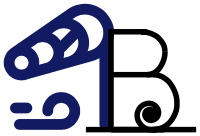One of the last sites we visited while in Berlin was the location of what was once a concentration camp, called Sachenhausen. The camp was built next to a town called Oranienburg, which is a short train ride from the main city. After a short introduction from our guide, giving us the basic information about where we were going, our group boarded the train and, after about 40 minutes, arrived at our destination.

The train station was a short walk away from the camp, but still held many things related to it. We passed buildings that used to be the SS barracks, and various administration buildings. We noticed how nice the area looked, with nice lawns and flowers everywhere. Our guide told us that during the time of the concentration camp, that was intentional, to make the prisoners feel like they were undeserving of these things.

Once the group got inside the former site of the first wall, the scenery changed dramatically. The buildings were grey concrete and there were walls or fences or markers of where they used to be everywhere. Sachenhausen was a sort of “example camp” where many guards were trained. It was not a death camp, insofar as people (in general) were not brought there explicitly to die. That does not mean they were treated any better. Guards competed on who could beat a prisoner the most, and deaths due to these vicious assaults were common. As mentioned, most of the people brought in were not brought in to be immediately killed, and therefore most of those who were at the camp were not Jews, although in later years some were housed here. Instead, most of the inmates were either political opponents of the Nazis, such as social democrats or communists, or they were “antisocial”.


When we passed through the gates to the former prisoner barracks, our guide pointed out the words “work sets you free”. What a lie that was. He also pointed out the location where Stalins son was shot dead “escaping”. The camp was originally built as a triangle, with the idea that a single guard tower with an mg42 could see the whole camp. However, as the Russians pushed west, camps had to be closed, and an expansion was made to accommodate the new Jewish inmates. Speaking of the Russians, they were the ones to liberate the camp. At the moment of liberation they didn’t do much other than say you’re free to the prisoners, but after the war the camp was in East Germany, so they erected a monument to all the communists who died there-and only the communists, not any of the other people who were brutalized.

Once we had finished seeing the main barracks, the guide brought us to a trench dug in the ground, where trainloads of Soviet POWs were shot. We were also shown the building next door, the site of the camps crematorium, and another method of execution. After that the tour was almost done. We saw the doctors office where they performed medical experiments, and occasionally actually assisted those who were considered “aryan”.

In school you learn all about WW2, and the horrors of the holocaust and Nazi Germany, but it is very different seeing the remnants of those atrocities in person.


Well written Jack. Very sobering.